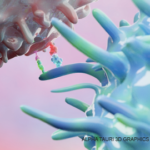In the final study discussed by Dr. Bucala, researchers sought to look at the molecular and cellular predictors of flare in RA. In using RNA sequencing to evaluate blood samples collected during periods of disease flares, researchers found consistent changes in blood transcriptional profiles one to two weeks before a flare. These circulating flare antecedent preinflammatory mesenchymal, or PRIME, cells appear to traffic to the synovium and perpetuate inflammation.6
In Sum
As can be seen by the studies discussed in this lecture, RNA sequencing—in particular single-cell RNA sequencing, has become an extremely important tool in understanding the fundamental aspects of disease pathophysiology in the field of rheumatology. RNA sequencing is a method that allows for the detection and quantitative analysis of messenger RNA (mRNA) molecules in a biological sample and has been found to be quite useful for studying cellular responses.
Since evaluating the entirety of the proteome—the thousands of proteins expressed by the genome that exist in a single cell—can be challenging, the transcriptome, in the form of mRNA, can be used as a proxy to understand cellular traits and changes in cellular state.7 Dr. Bucala nicely demonstrated in his lecture the past, present and future of this and other technologies in aiding our understanding of the many facets of rheumatologic disease.
Thus, the review ended with the promise that we, as rheumatologists, are closing in on a clearer understanding of the causes of rheumatic disease. With this silver lining to an otherwise topsy-turvy year, clinicians and basic science researchers alike can be optimistic for what 2021 has in store.
Jason Liebowitz, MD, completed his fellowship in rheumatology at Johns Hopkins University, Baltimore, where he also earned his medical degree. He is currently in practice with Skylands Medical Group, N.J.
References
- Singh M, Jackson KJL, Wang JJ, et al. Lymphoma driver mutations in the pathogenic evolution of an iconic human autoantibody. 2020 Mar 5;180(5):878–894.e19.
- Bashford-Rogers RJM, Bergamaschi L, McKinney EF, et al. Analysis of the B cell receptor repertoire in six immune-mediated diseases. 2019 Oct;574(7776):122–126.
- Kamitaki N, Sekar A, Handsaker RE, et al. Complement genes contribute sex-biased vulnerability in diverse disorders. 2020 Jun;582(7813):577–581.
- Wei K, Korsunsky I, Marshall JL, et al. Notch signaling drives synovial fibroblast identity and arthritis pathology. 2020 Jun;582(7811):259–264.
- Alivernini S, MacDonald L, Elmesmari A, et al. Distinct synovial tissue macrophage subsets regulate inflammation and remission in rheumatoid arthritis. Nat Med. 2020 Aug;26(8):1295–1306.
- Orange DE, Yao V, Sawicka K, et al. RNA identification of PRIME cells predicting rheumatoid arthritis flares. N Engl J Med. 2020 Jul 16;383(3):218–228.
- Haque A, Engel J, Teichmann SA, et al. A practical guide to single-cell RNA-sequencing for biomedical research and clinical applications. Genome Med. 2017 Aug 18;9(1):75.


